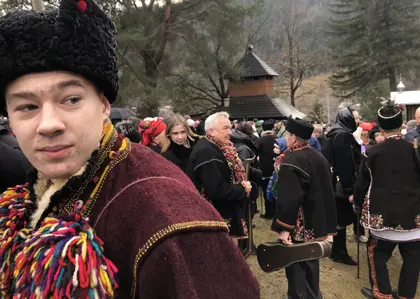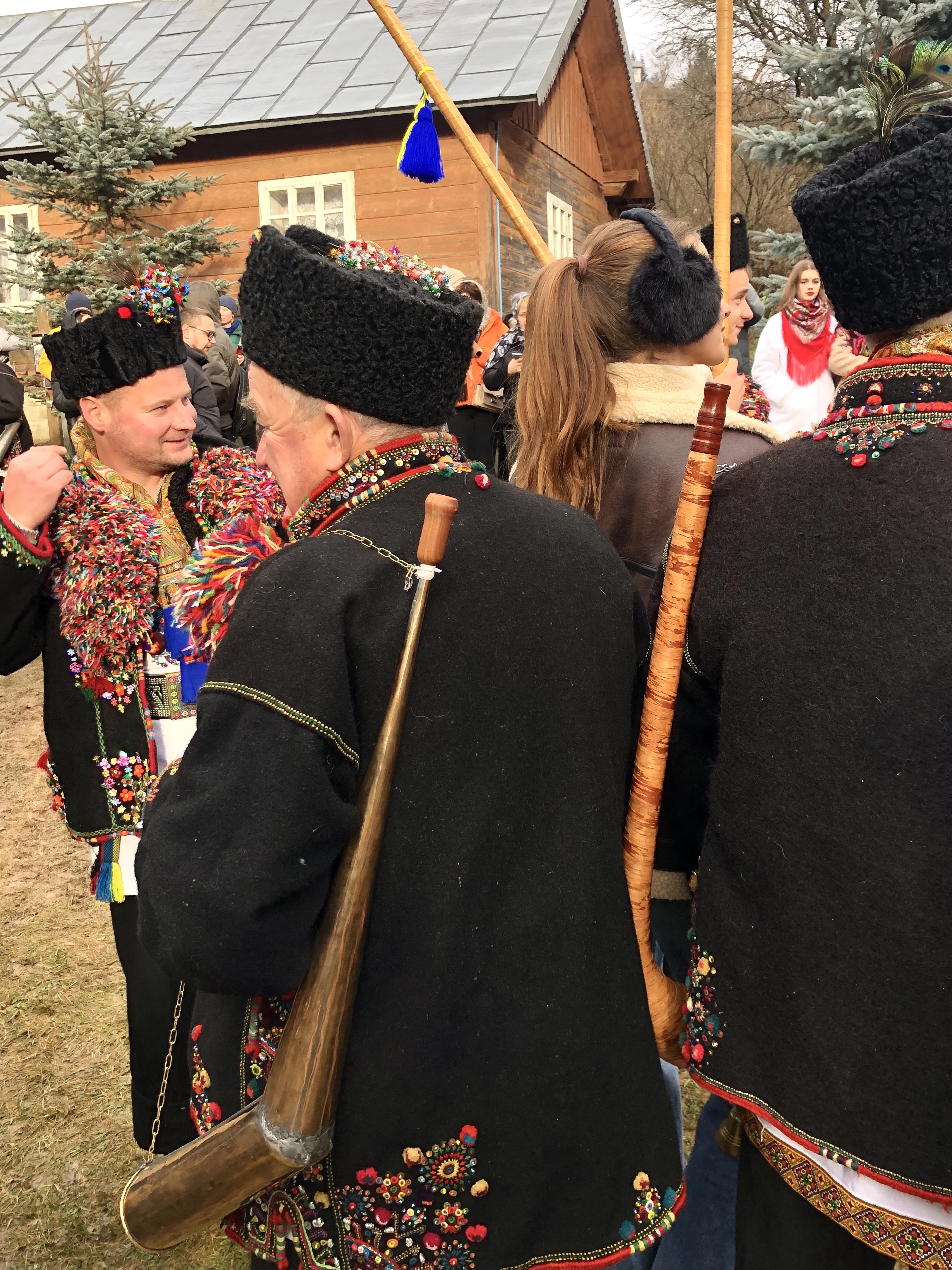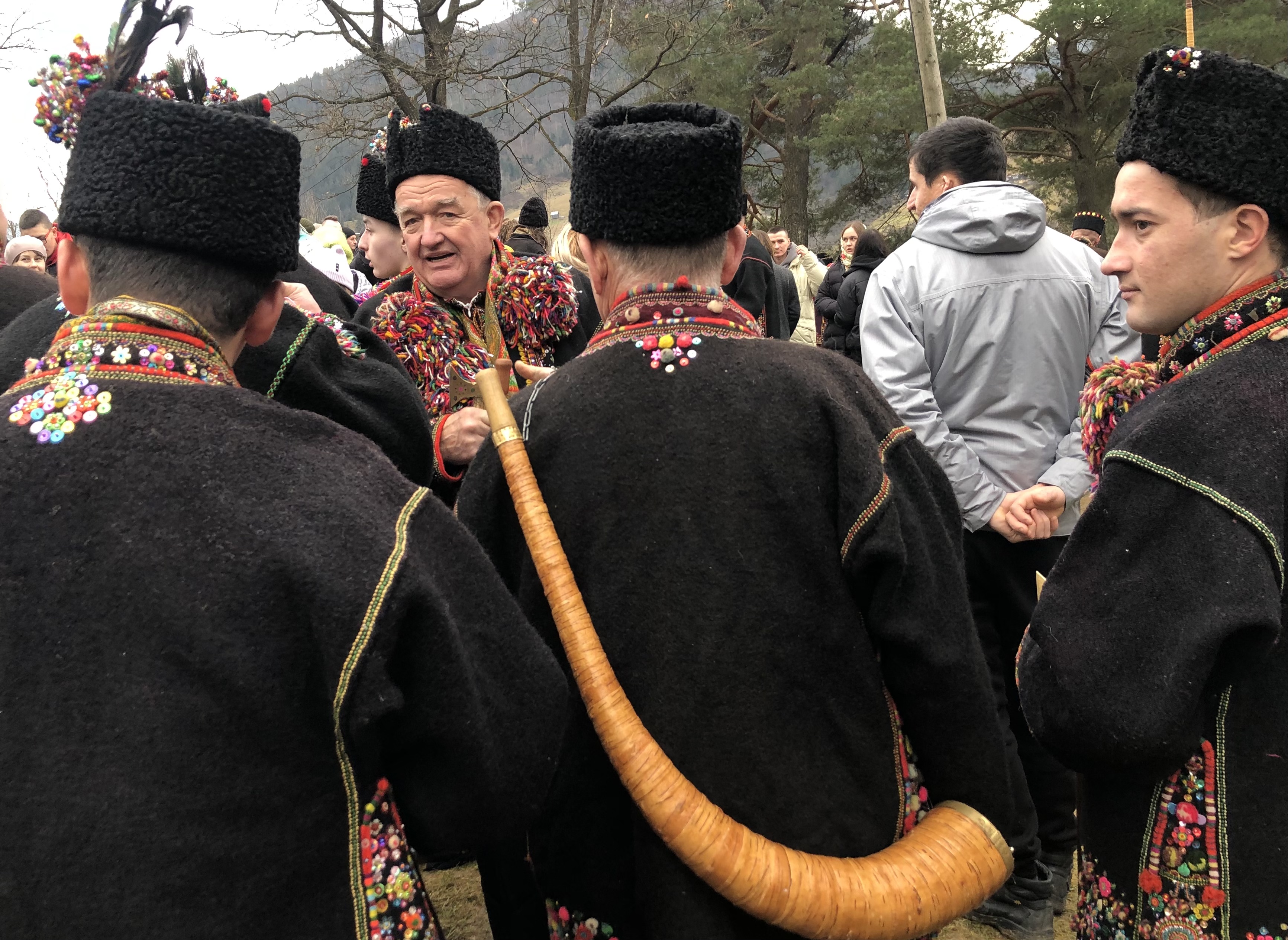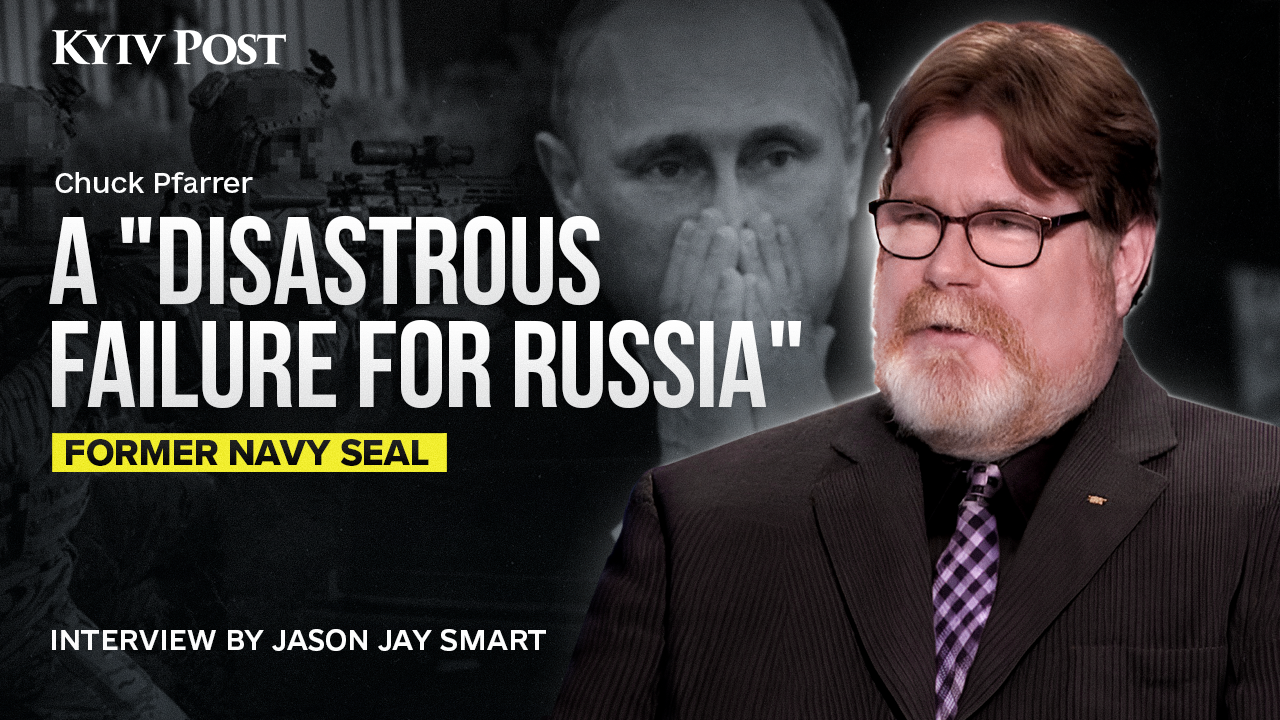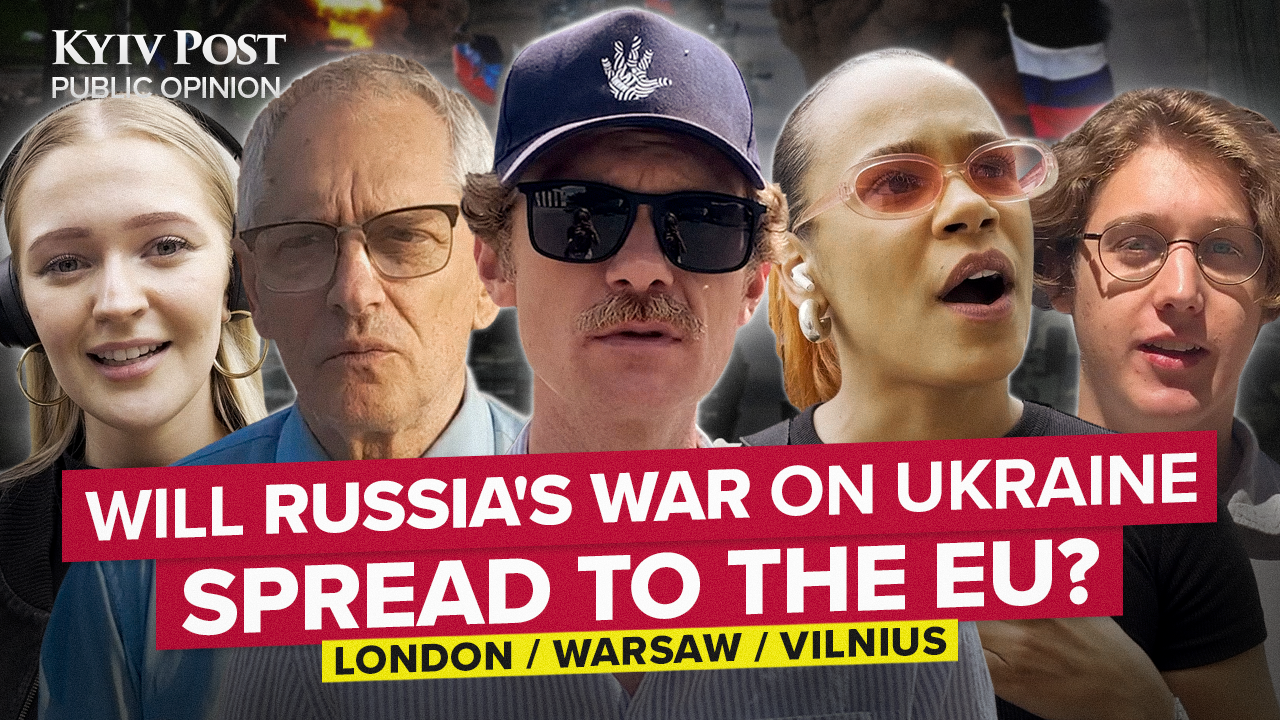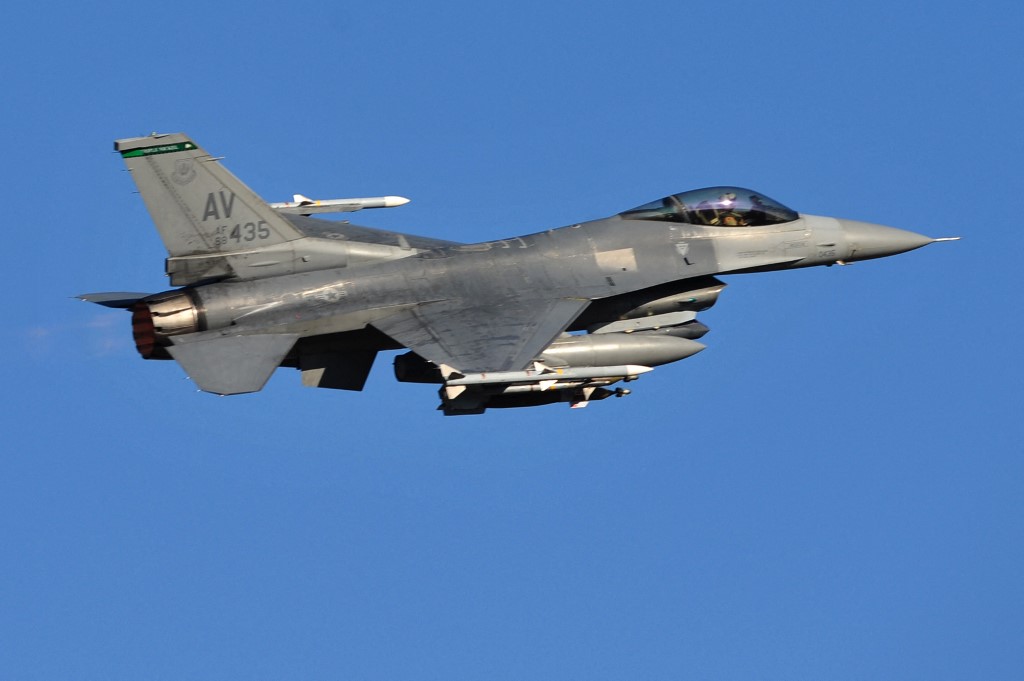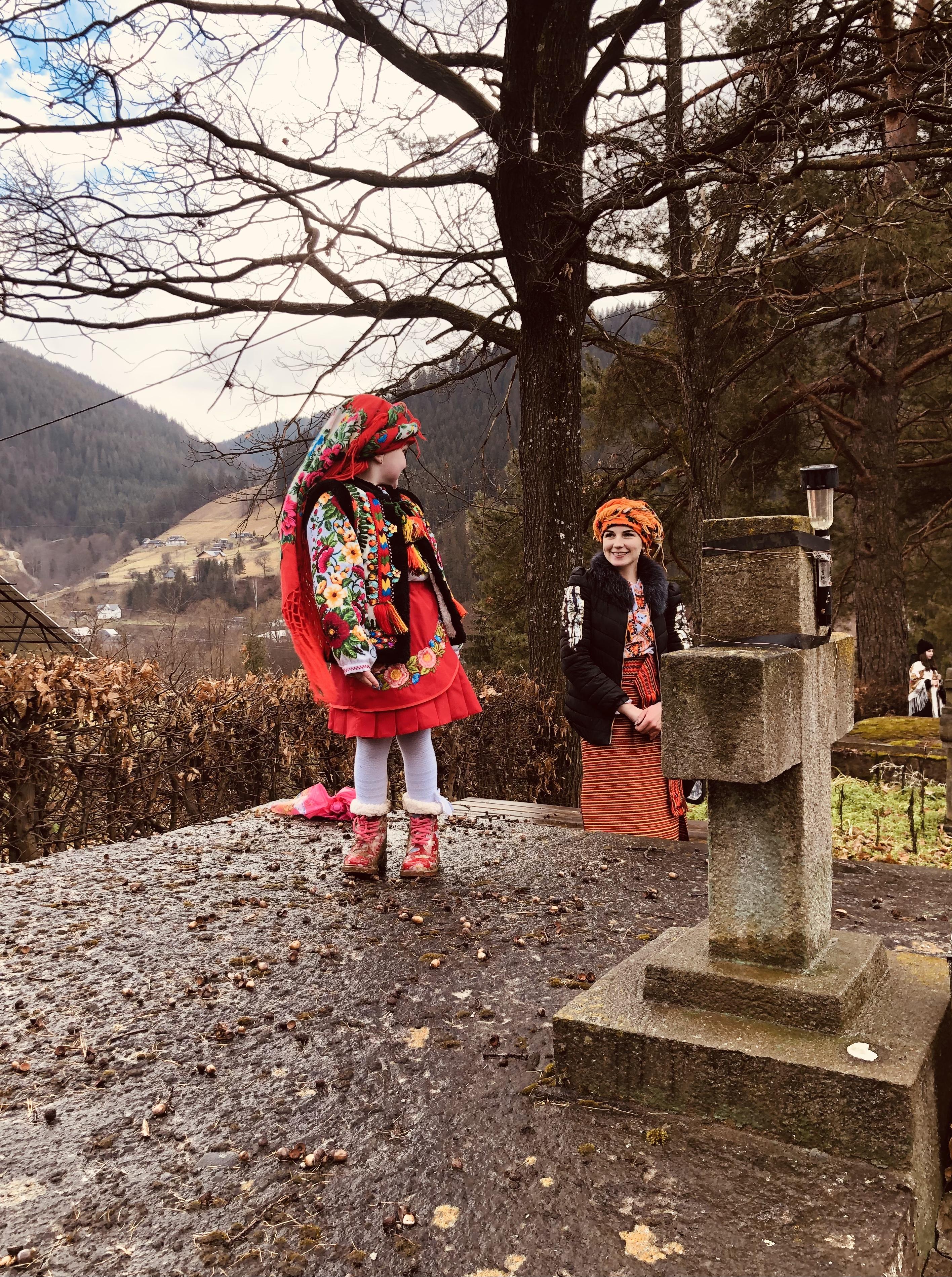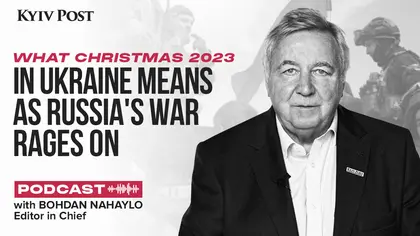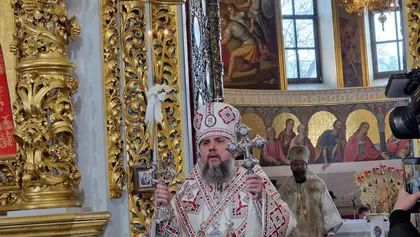“Today is a good day,” says Ivan Rybaruk, a priest from the small village of Kryvorivnya, pointing at the sky with his finger. There is a rainbow in the sky.
It was raining lightly on Christmas eve as locals were looking for a sign or a blessing.
JOIN US ON TELEGRAM
Follow our coverage of the war on the @Kyivpost_official.
Rybaruk refers to the Biblical text, where the rainbow is considered a signal sent by the deity to the descendant of Noah. The sinners, the wrongdoers, were drowned according to the flood myth. Yet, this weather phenomenon is considered by many Christians a sign of God's goodwill: no more talk of a total extinction of the species under the rainbow sign. No talk of cataclysm.
Yet, the war still rages in Ukraine: Hundreds of miles away there is shelling and fighting. Almost every week, someone of Rybaruk’s parish comes back home in a coffin.
The church where Ivan Rybaruk is addressing his parish stands on a hill, overseeing the road. An old wooden church built in the 18th century, it had survived the Soviet occupation.
It has become a popular place for local churchgoers and tourists from all over Ukraine. The license plates on the vehicles on the busy road suggest they’re coming from Kyiv, Poltava, Kharkiv, and Zaporizhzhia.
Once a year, there is always a traffic jam in Kryvorivnya. It’s Christmas time.
For decades the Christmas celebration in Ukraine went according to the Russian calendar. This year, the tide has changed for the first time in almost a century.
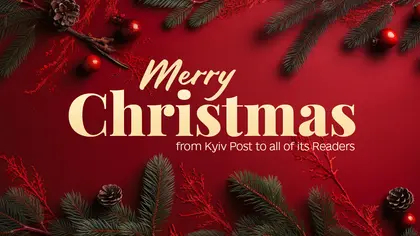
Merry Christmas from Kyiv Post
Until now, the timing of the main Christian feast defined the zones of influence of the Moscow church: Jan. 7 versus Dec. 25. Yet the timing of the rite holds a deeper meaning.
“A month ago, when I was returning from delivering communion to a sick person, I received a telephone call. ‘Father Ivan, will Christmas be on the 25th?’” Rybaruk recalls. “It turned out that Epiphanius (the leader of the Ukrainian orthodox church) said that. That's how it all started.
“They at the synod allowed us to make our choice. This is very evangelical. They didn't say we have to do it. They just said the decision is up to us.”
Ukrainian Carpathians, famous for their anti-Soviet resistance during World War II, were finally conquered by Stalin's forces in the 1950s.
The partisans, performing acts of sabotage against the Red army and the NKVD, the USSR's main security agency and the FSB's predecessor, ceased to exist by the end of Stalin's rule.
The last fighters of the Ukrainian rebel army, UPA, were either killed or sent to Soviet labor camps known as the gulag.
However, a local church became a branch of Moscow patriarchy and followed its rites and traditions. We speak with the priest in front of a small crowd of local churchgoers and tourists.
«The biggest sin in times of war is not to kill «moscal», a muscovite,» — says Ivan Rybaruk. Rybaruk refers to Russians as godless sinners.
At the notion that his fellow Christians within Russia should have a way out, Rubaryk repeats himself.
«To kill a muscovite — the answer is the same.» — the priest answers with a smile.
He refers to a local Moscow church as a branch of collaborators with the Russian army and, more than that — a headliner of any aggressive action of Kremlin rulers.
«Let me explain myself,» — continues Rybaruk — «We have to kill those, who invade our land, but those who stay in Russia… We will have this neighbor until the end of time. Therefore, we have one task, not only in Ukraine but the whole world: to kill «moskal» (the muscovite), not only physically. Informational, cultural muscovite (because there is no culture there)… Then we will be given a chance to become our real selves. In the future, it will also give a chance to those unfortunate people still under this Moscow spell. When they kill a muscovite. Within themselves»
The Carpathians are famous for their superstitions and mysticism.
It’s where religion and witchery still walk hand in hand, and local shamans, called molfars, are practicing their rites and rituals — a weird mixture of witchery, paganism, and Christianity.
Kolyada, the pre-Christian tradition dedicated to the day of the winter equinox, was incorporated into a local Christian rite. Now it’s the priest, not the local village council, that invites the local choir dressed in traditional costumes to sing the monotonous traditional song, wishing prosperity, health, and huge flocks to the mountaineers.
One of the singers, called kolyadnyk, is Ivan Rybchuk, a 73-year-old former worker who lost fingers on his right hand at the lumber mill during the Soviet times.
“Somebody had to start this,” Rybchuk says, referring to the new calendar and the change of the old habit.
This shift in the timing of festivities means a lot to the locals. For Rybchuk and others, it’s a sign of a comeback to times when Ukrainian Carpathians were within the zone of European and not Russian influence.
“We are finally back to the real rite,” says Rybchuk. “We are at the heart of Europe. That’s where we belong.”
You can also highlight the text and press Ctrl + Enter


